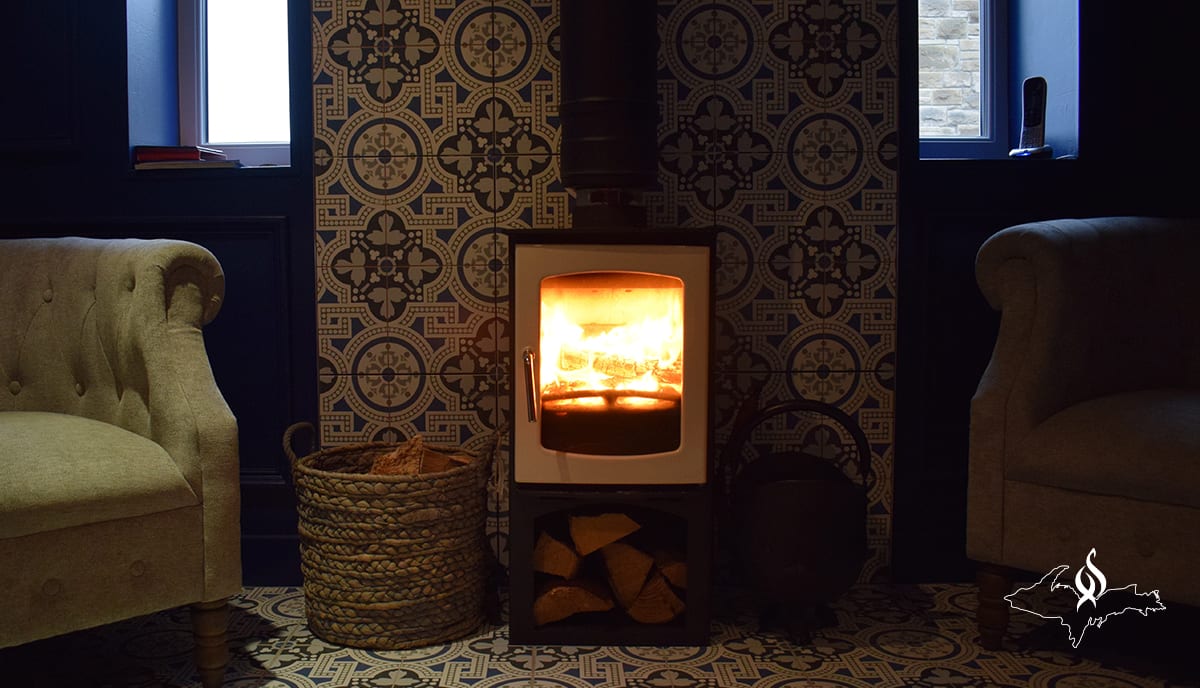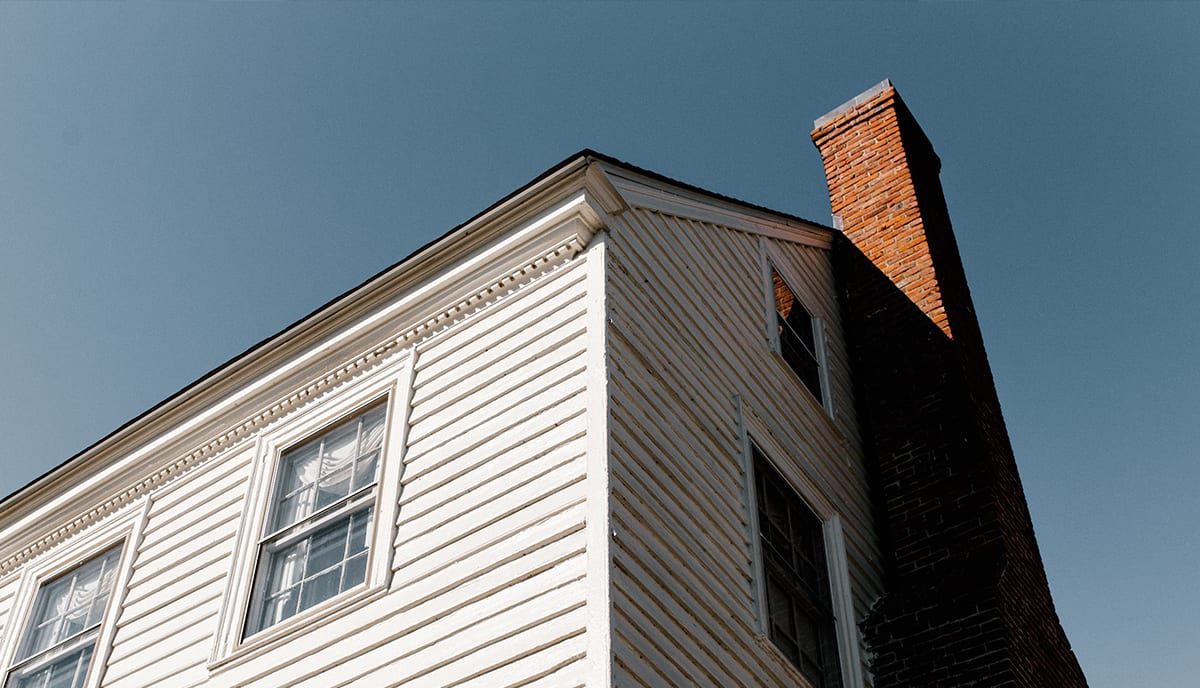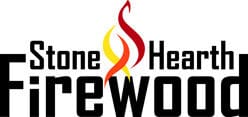As chilly weather fast approaches with each passing day, we begin to stockpile our firewood for the winter months and anticipate evenings spent in the cozy ambiance that a blazing fireplace gives off. In addition to getting your wood stocked up, another important task that should be on your autumn to-do list if you have a fireplace is to get your chimney cleaned.
Fall is the best time to clean your chimney, before the burning season begins. This will allow you not only to remove creosote deposits, but also remove any debris from the chimney flue such as dead animals, bird nests, or leaves that could reduce draft. If you burn a lot of wet firewood (which we don't recommend) or your wood stove doesn't burn wood efficiently, it's wise to clean your chimney in the middle of the winter as well as in the fall.

There are three popular methods for cleaning your chimney: hire a chimney sweep, burn a chimney-cleaning log, or clean it yourself.
If you don't have time to clean your chimney yourself and don't mind spending the money on hiring a professional, hiring a chimney sweep is a great method for you. When you hire a professional, you also get the peace of mind knowing the job's been done right.
Chimney cleaning logs are another popular option for cleaning your chimney. However, many people don't realize that this method is not a substitute for proper cleaning. How do these logs work? The smoke these logs give off when burning contains special chemicals that adhere to the creosote in your chimney. Typically, over the space of one to two weeks, the additives attack the creosote and cause it to become brittle and fall from the flue, or it just makes the creosote easier to brush away. If you use these chimney cleaning logs, we recommend still giving your chimney a proper inspection. You'll also probably have to clean it a bit, although using these logs will probably make your cleaning a bit easier.
The third chimney cleaning option is to do it yourself. Understanding how to properly clean your chimney will not only save you money, but it'll ensure you create a safer burning environment and reduce the chances of a dangerous chimney fire. *Note: never clean it when a fire is burning in the fireplace. Make sure the chimney is cold, and be sure to wear protective equipment like a dust mask and eye protection.
When you clean your chimney, you're essentially removing the creosote that has built up on the inside of the chimney walls. Creosote is classified into three stages. First is fine dust or a flaky substance that comes off easily. The next phase of creosote looks like a brittle black sponge. However, this creosote should still come off easily when using a proper chimney sweeping brush. Typically, the third stage of creosote is the hardest to remove. This stage often occurs near the top of the chimney where the gases have cooled down and come into contact with the exterior chimney walls. This final stage of creosote looks like a shiny black glaze or tar. If you do notice this type of creosote in your chimney, your best bet is probably to hire a professional chimney sweep – as it usually takes more than a standard chimney brush to clean it off.
Every chimney is different, so you may need to modify these steps to work with your specific chimney design. However, the process for every chimney is somewhat similar. There are four different methods to clean a chimney effectively. Each has positive and negative factors, so choose the way that works best for you. To start, there are different types of brushes for round and square chimneys. Measure the size and note the shape of your chimney, and then buy a brush that fits those dimensions. Also, if you have a metal chimney liner like stainless steel or aluminum, use a poly chimney brush that won't scratch your flue. If your chimney is clay tile or cast-in-place flue, a metal or poly brush will work.

METHOD #1: CLEAN FROM THE TOP DOWN WITH A BRUSH AND ROD.
This method is usually the most popular way to clean your chimney. It's quick and easy but involves climbing on your roof which may not be ideal, depending on the slope of your roof and other factors. This chimney cleaning method allows you to completely seal off the interior of your fireplace, which prevents a mess of ashes and soot from floating into your home.
To start, seal off the opening of your fireplace with a sheet, tarp, or other material. If you have a wood stove, you're probably able to remove the pipe from your woodstove and tape a garbage bag around the open end to catch any soot and debris. Next, take your brush and cleaning rods and climb onto the roof. Some chimneys have a cap that you must remove before you can do any cleaning. Remove the screws, and the cap should easily come off. Attach one section of the rod to the brush, and begin sweeping the inside of your chimney with an up and down motion. While cleaning, be sure not to twist the rod in a counterclockwise direction or you could accidentally unscrew the rod from your brush. Continue adding more rods as you sweep further down the chimney.
METHOD #2: CLEAN FROM THE TOP DOWN WITH A BRUSH AND WEIGHT.
Seal off your fireplace or woodstove just as described in method 1. Take your brush, weight, and rope and climb up on your roof. Lower the weighted brush down your flue. Pull the brush up and down to scrub.
METHOD #3: CLEAN FROM THE TOP DOWN WITH A BRUSH AND DUEL ROPES.
This method requires an extra person to help. Take the brush with ropes attached to each end and climb onto your roof. After removing the chimney cap and ensuring you have someone inside the house at the opening of the fireplace, drop one end of the rope down the chimney. Using the ropes, pull the brush back and forth, scrubbing away any creosote.
This option can be a hassle because it requires two people to do it, and you can't seal off the interior of your home, which might leave you with a mess to clean up. Once finished, reinstall the chimney cap and clean up.
METHOD #4: CLEAN FROM THE BOTTOM UP WITH A BRUSH AND ROD.
This method is similar to method #1, but you don't have to climb onto your roof to do it. You won't be able to seal off the entrance of the fireplace in your home of course, so this method does leave a bit of a mess. To prevent furniture from being ruined, cover nearby items with tarps or sheets.
If you're cleaning a wood stove, remove the pipe from the stove to start. Attach the brush to the rod and push it up the flue from the base of your fireplace or woodstove. Clean the chimney just as described in method #1, while taking care not to twist the brush counterclockwise so it doesn't come apart. Once you're done, use a mirror and flashlight to inspect the inside of your chimney. While this method doesn't require you to get up on your roof, it can be a messy method, and a bit more difficult than cleaning from the roof.
When you've finished with whatever method you decided to go with, take the time to shine a flashlight and inspect all chimney components for damage. We recommend that you look for cracks in the chimney liner, damage to the chimney crown, or damage to your damper or flue.
So that's it! Whether you decide to hire a professional or do it yourself, you'll be glad for the extra peace of mind knowing you won't have to worry about a chimney fire from creosote buildup.
